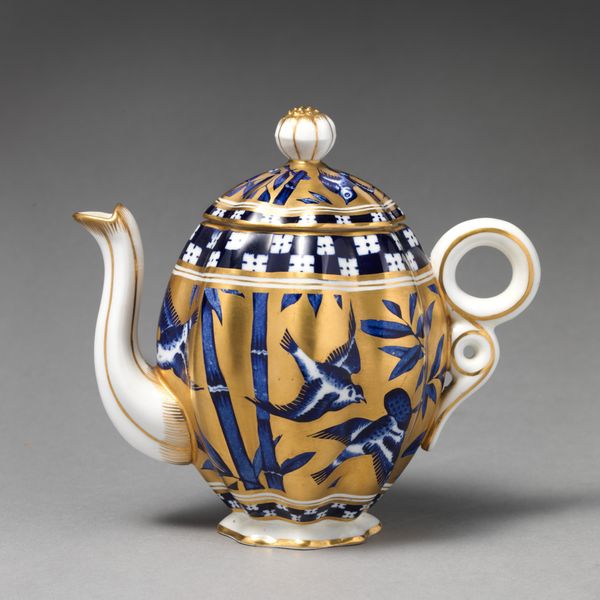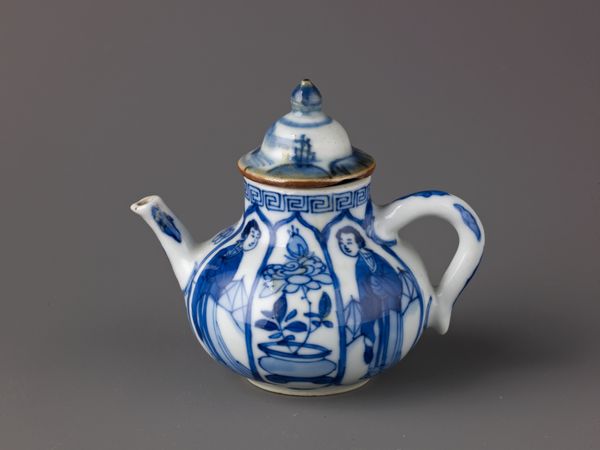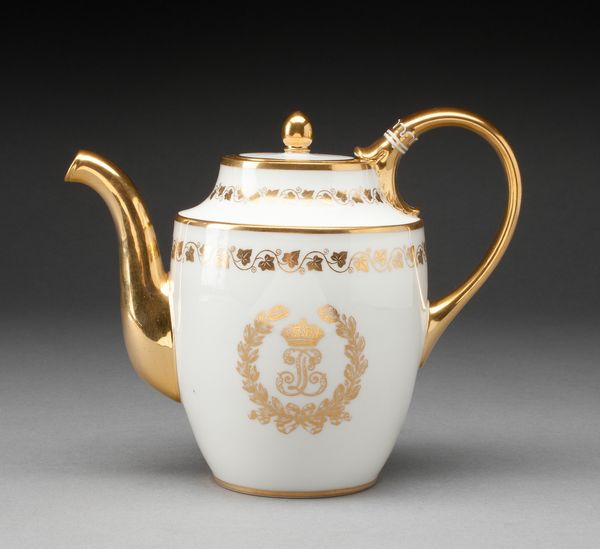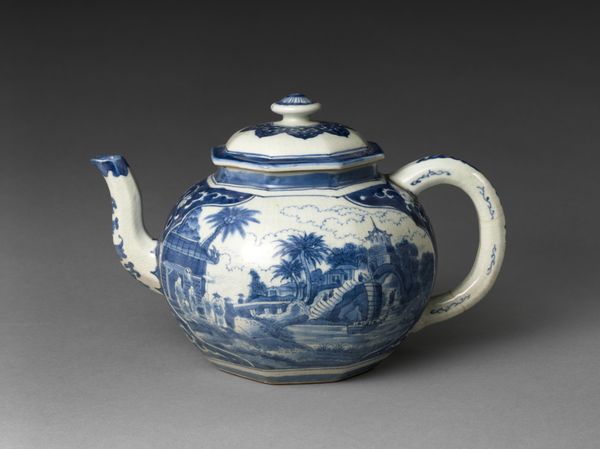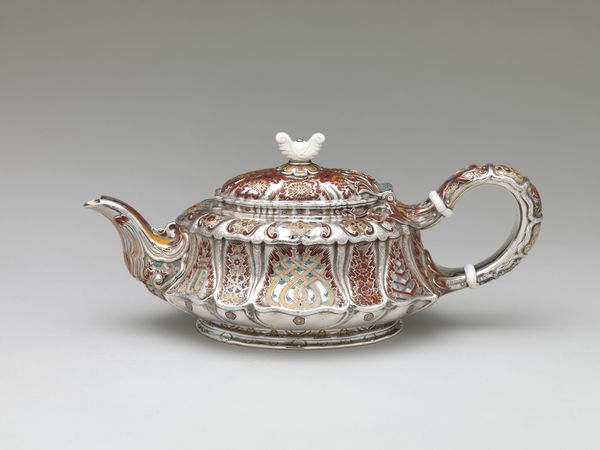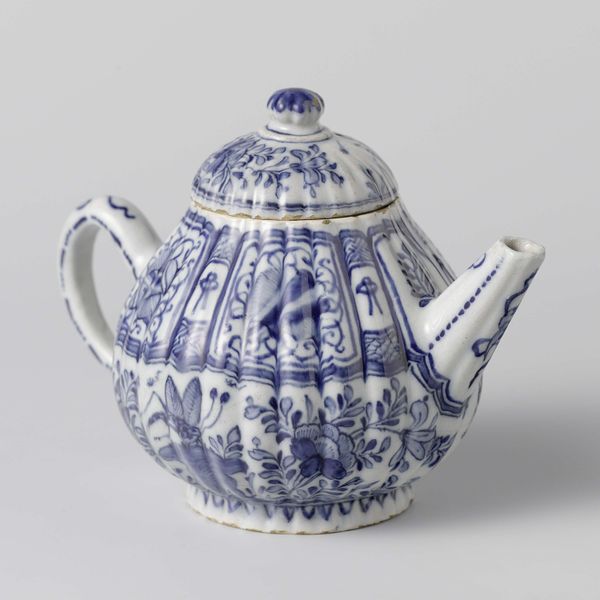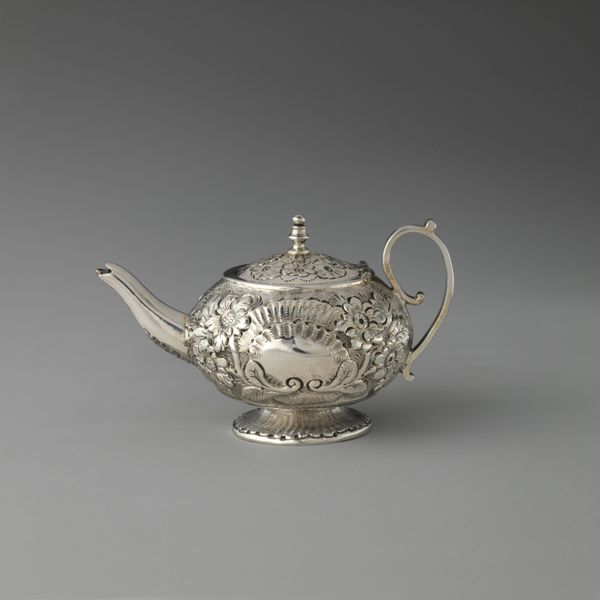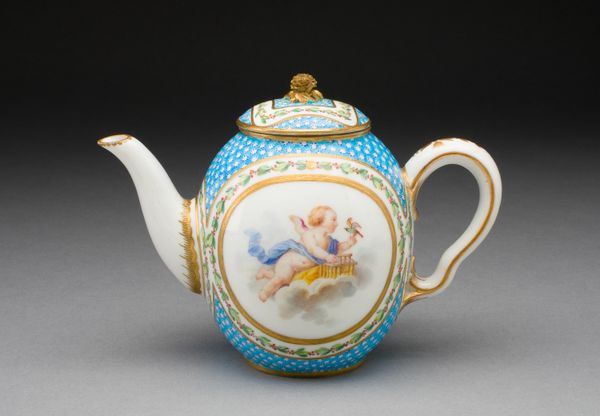
ceramic, porcelain, sculpture
#
asian-art
#
ceramic
#
porcelain
#
sculpture
#
decorative-art
Dimensions: confirmed: 5 5/16 × 7 3/4 × 4 7/8 in. (13.5 × 19.7 × 12.4 cm)
Copyright: Public Domain
Curator: Here we have a teapot, part of a larger service, crafted by Coalport sometime between 1870 and 1886. The porcelain shimmers with a vibrant, gilded surface, doesn’t it? Editor: It does! My initial reaction is one of pure opulence. The gold against that vibrant blue…it almost feels aggressively luxurious. Curator: Precisely. The bold color choices certainly dominate. If we analyze the interplay, the cobalt bamboo stalks reaching upward direct the viewer’s eye toward the lid, drawing a distinct verticality that is balanced against the rounded form. Editor: But that’s where it gets interesting, doesn’t it? Porcelain production, even in the late 19th century, carries the legacy of colonialism and the exploitation of resources and labor in East Asia. This British-made teapot with East-Asian inspired motifs...it feels like a trophy of sorts. Curator: An intriguing point. However, considering the pattern's deliberate use of asymmetry, avoiding exact mirroring, highlights the artistry involved, and focusing purely on the sociopolitical diminishes the craftsmanship, doesn’t it? Look at the exquisite brushwork used to render each bird in flight. Editor: I agree, there's skill involved, undeniably. But consider the bamboo motif itself – often symbolic of resilience and flexibility in Chinese art and philosophy – here it's merely decorative. It's been divorced from its original context, re-appropriated as ornamentation for Western consumption. Doesn't that loss of meaning become a part of the work's narrative? Curator: A compelling thought, indeed. Perhaps this "Tea Pot" exists within a broader spectrum of cultural exchange, a decorative yet complex historical artifact. Editor: Yes, this beautiful object opens a conversation about cultural power, commodity, and the enduring echoes of imperialism that continues to shape and redefine aesthetic conventions today.
Comments
No comments
Be the first to comment and join the conversation on the ultimate creative platform.
